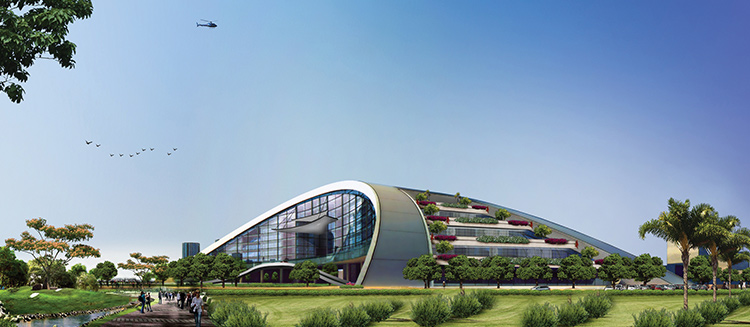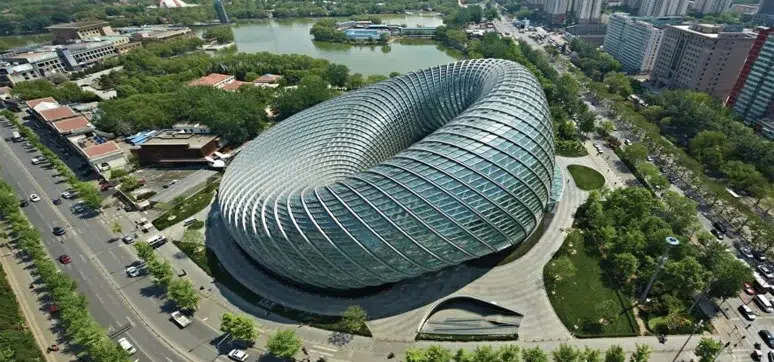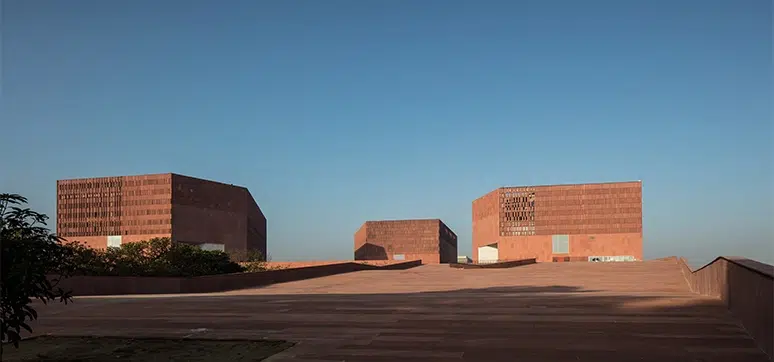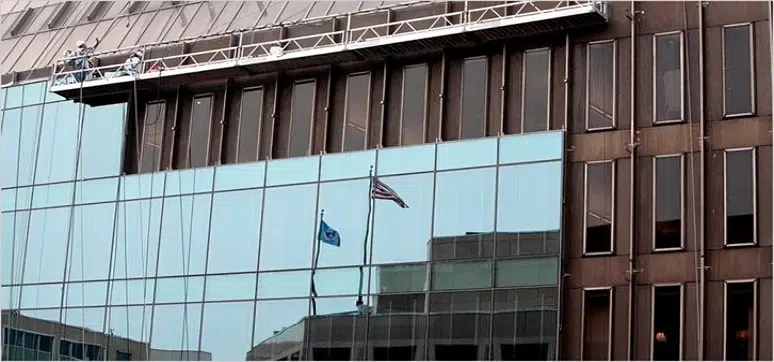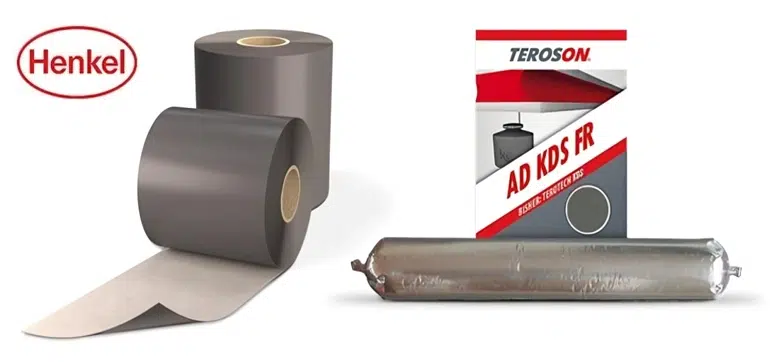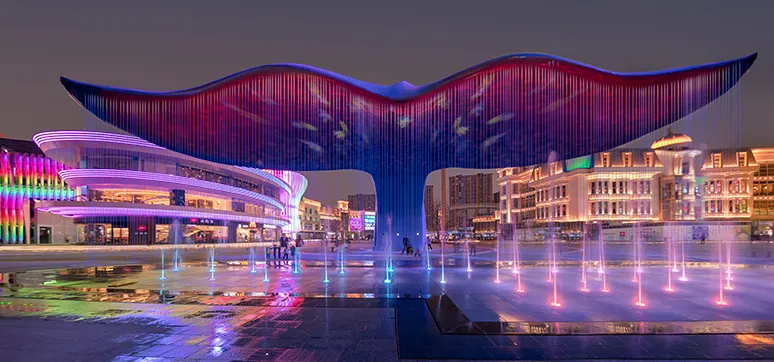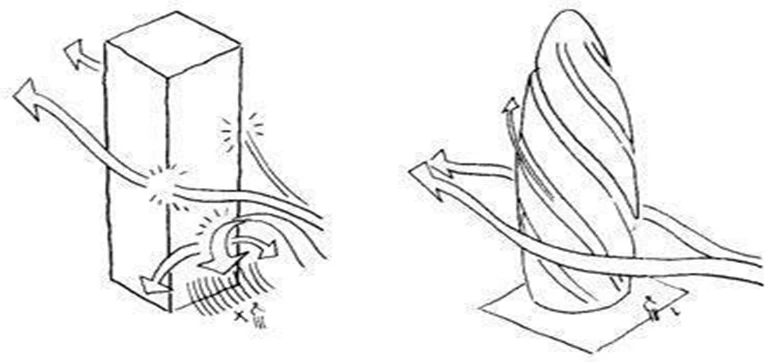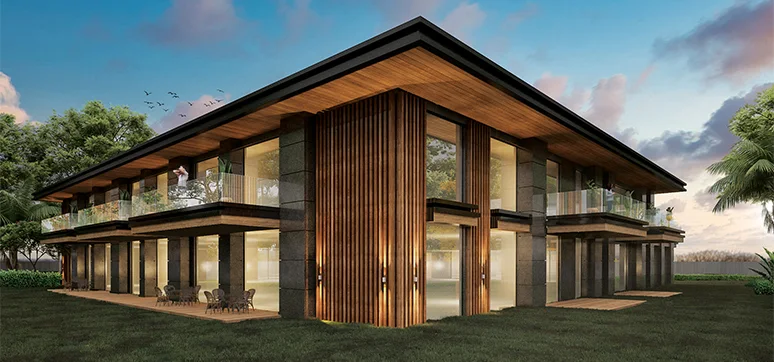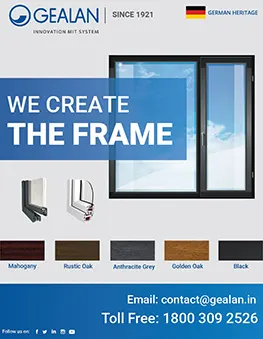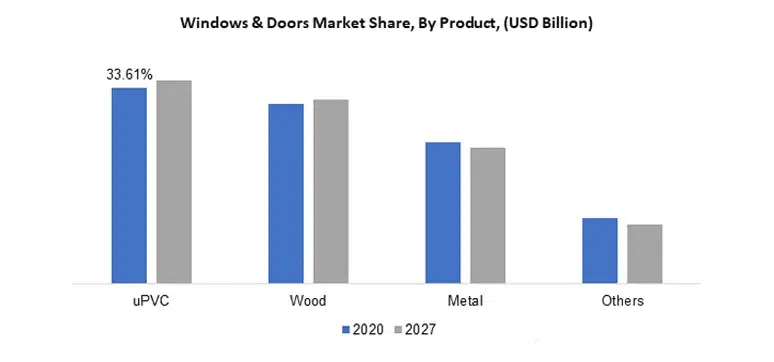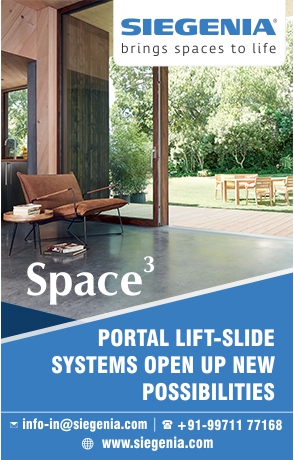Green Buildings: Thermal and Acoustic Environmental Requirements
By:
Today, we have gone past the point where going ‘green’ was an option. It has now become an absolute necessity. The concept of green building design relies on minimising the demand for non-renewable resources and optimising the use of natural resources as far as 70 per cent. As a nature green buildings have unique characteristics of having an exposed aesthetics featuring original building materials. An energy-efficient building is one that can reduce energy consumption by at least 35 per cent as compared to a conventional building.
Designers utilise the thermal mass by radiating the heating and cooling comfort to better the thermal environment of the building, thereby reducing energy consumption. A responsive building facade is one of the important components to achieve energy efficiency by reducing the need for cooling, lighting and ventilation. Facade design and construction specifications have great potential in controlling its interior environment, through the use of insulation, energy-efficient windows and passive solar design techniques.
Acoustics is also very closely associated with well-being and its influence on the stress levels, motivation and productivity of an individual. It has been recorded that a poor acoustic environment would not only cause harm to occupants’ physical but also psychological health. Hence, one of the green building focuses is to create a built environment that would reduce the impact to human health and the environment.
Passive Building Design Strategies for Facade
The expression “passive building” refers to a construction standard that can be achieved using various types of construction materials. In other words, it implies a green building construction that guarantees an interior climate as comfortable in summer as it is in winter without a conventional heating or cooling system.
There are certain design criteria to reduce the energy consumption in a building. Buildings in a tropical climate would require a facade that enables in keeping the building cool whereas the buildings in cooler climatic conditions would prefer a facade that keeps it warm. One has to also take into consideration the site condition and landscape which are essential design components. Green roofs, green walls and water features may help in keeping the surrounding temperature low and render higher moisture in the air. Trees can also be used as they not only provide shade against the blazing sunlight but also maintain the indoor air temperature.
In both our recent Green building projects for ONGC at Uran and MMRDA’s new office at BKC, Mumbai the alignment of the main building has been strategically designed keeping in mind the path of the sun. To maximise the penetration of daylight light shelves are installed thereby minimising the need for artificial lighting. Windows play an important role in heat loss or heat gain which either raises or lowers the room air temperature. Both projects incorporate the use of double-glazed units (DGu) as external facade glasses with low ‘e’ values of heat thereby allowing minimal transfer of heat due to the west-facing sunlight. The MMRDA’s green building office also boasts of low ‘e’ value glasses for the external facade to prevent heat intake from the sun.
To further intensify the effect, solar screens have been fixed to dissipate the sun’s heat and glare before it transfers to the interior environment.
The use of insulation material is essential as it reduces the transfer of heat from the outside to the inside. The efficiency of the building envelope is depending on three factors: Fully solid or insulated walls, appropriate gaps in insulation (thermal bridges) and limited parasite air passages. Full insulation is a result of the project design phase: while limiting thermal bridges depends on the choice of construction systems and airtight seals are instantly associated with the quality of deployment work. For really efficient green building insulation, we must choose both suitable materials and use it so as to ensure its resistance over time alongside that of the other elements of the wall associated with it.
External Glass Curtain wall Cladding
Both MMRDA and ONGC buildings have a smart facade. Coming to the detailed specifications, the glass skin used for the curtain wall consists of 28mm thick double glass unit (6mm HS= 16 mm Air gap + 6 mm HS) glass clear fog head having U valve 1.0: Solar factor 24: LT 25 per cent. The spandrel glass has a 6 mm heat-strengthened blue tinted glass. For the heat transfer control at the spandrel level, a 75 mm panel of TF-quality expanded polystyrene within the spandrel glass is provided over the structural steel section. Polystyrene can be rigid or foamed. General-purpose polystyrene is clear, hard and brittle. Insulation of glass wool 50 mm thick ( density 48kg) with woven make fabric black veil has been provided in 0.8 mm thick GI Black pan with SS screws and nut bolts.
Acoustics in Green Buildings
If we study the survey reports four to five years ago we would learn a huge occupant dissatisfaction with acoustic quality in green buildings compared to conventional buildings, especially in working spaces that adopt an open office concept. Major acoustic complaints made were people talking on the phone, people talking in neighbouring areas, people overhearing their private conversation, getting caught up in others’ conversations and the sound of a phone ring and most importantly transfer of disturbing sounds from exterior to interiors.
Since acoustical distractions top the list of dissatisfaction in green buildings, it has become increasingly imperative to take notice of the acoustical influences during the early stages of design. Optimising green design and good acoustics can be challenging as one has to carefully strike a balance between the glass required for daylighting and the solid wall construction. Not only this, the architect also needs to investigate acoustically attenuated passive stack systems while designing a building. The use of under-floor air distribution also helps in lowering the background sound levels. To mitigate reverberation, designers can incorporate absorptive materials where possible; there are a number of new, sustainable material options that fit within the “Green” framework.
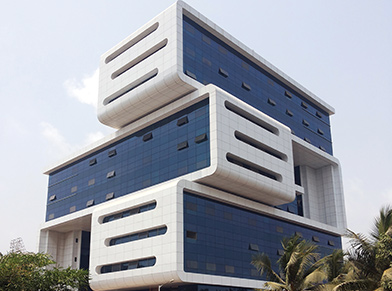
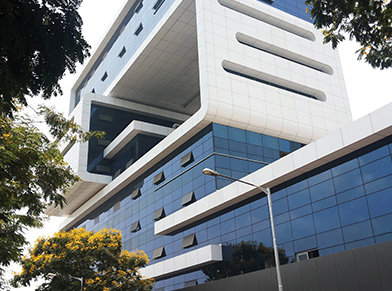
| MMRDA | |
| Project Name: | MMRDA |
| Location: | Bandra Kurla Complex, E Block |
| Client: | Engineering Department, MMRDA |
| Architect: | Team One Architects |
| Other Consultants: | Structural- Strud Consultants Proof Consultants- Sterling Construction Services- Nats Engineering |
| Materials used for façade: | Hybrid RCC, Structural Steel, Green Specification |
| Commencement Date: | May 2009 |
| Area: | 1.8 Lac sq. ft |
Without careful implementation of Green building design strategies, acoustic quality is easily compromised. Architects and designers should not overlook these influences as they could jeopardize the acoustical environment. Architects need to ensure that facade designs are the ones with more openings. Huge openings at the facade, large-sized windows along with ventilation louvers will trigger cross-ventilation in the building.
At ONGC as well as at the MMRDA, good acoustic design was important due to the nature of operations required for them as the headquarters. Acoustics and sound authentication were critically taken care of to achieve the maximum NRC (Noise Reduction Coefficient). With our past experience in high and performance theatres, care was taken to ensure that all the factors of the auditorium and board room designs starting from the shape, profile, lining on the wall etc. were determined from the very onset at the planning stage o prevent incremental cost at the time of finishing.
The acoustics of the auditorium is designed with appropriate air gap and panelling with wood-wool panels to ensure there is no reverberation of sound. Furthermore, even the line of travel for the sound was programmed to obtain an adequate sound reduction in the ceilings with the help of sound attenuators or soak panels. The most important factor to be mentioned here is that all the materials used for achieving acoustic efficiency are made of recycled substances; be it the carpets, wall soak panels as well as the ceilings.
The conventional methodologies of double wall construction with insulated blocks are also great methods to achieve the highest levels of thermal insulators as well as acoustical buffers, which automatically increase the performance of a building.
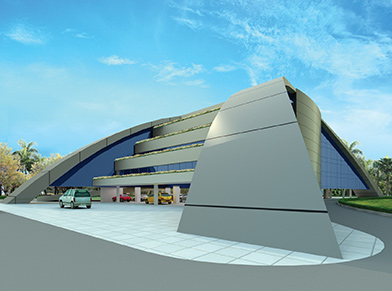
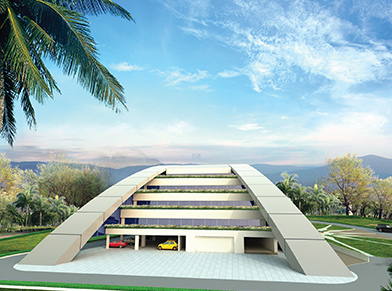
| ONGC | |
| Project Name: | Smart Campus for ONGC |
| Location: | Navi Mumbai, Uran |
| Client: | ONGC |
| Architect: | Team One Architects |
| Other Consultants: | Structural- SR Consultants, Services- DSG Consultants |
| Materials used for façade: | Green Specification, RCC Glass and Steel |
| Commencement Date: | March 2015 |
| Completion Date: | Estimated March 2018 |
| Area: | 80000 Sq Ft |
Top Stories
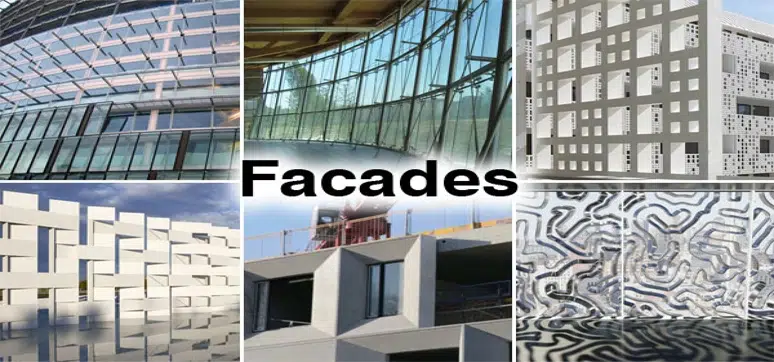
Façade Systems Market Size is Estimated to Reach USD 398.8 Billion by 2029
By: Abdul | April 16, 2024
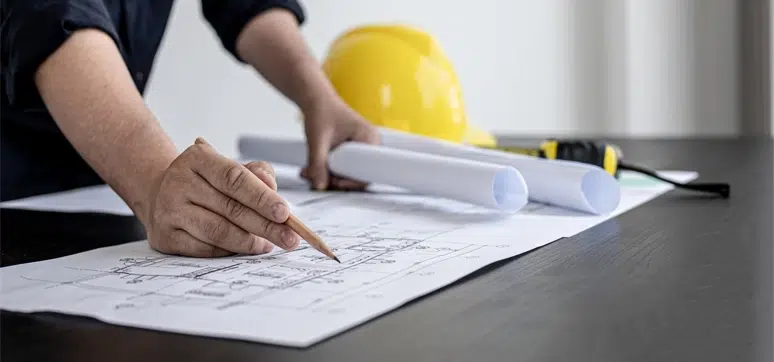
Improving Sustainability Alongside Fire Safety – Can We Deliver?
By: Abdul | April 16, 2024
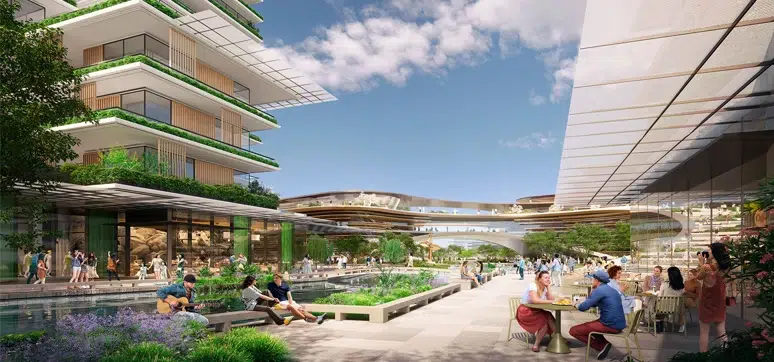
Foster + Partners Wins the Competition the New Xicen Science & Technology Centre
By: Abdul | April 9, 2024
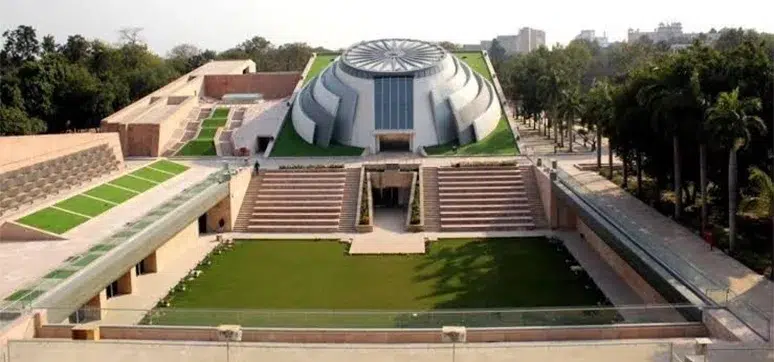
A Symbol of Architectural Brilliance & Cultural Significance
By: Abdul | April 8, 2024

